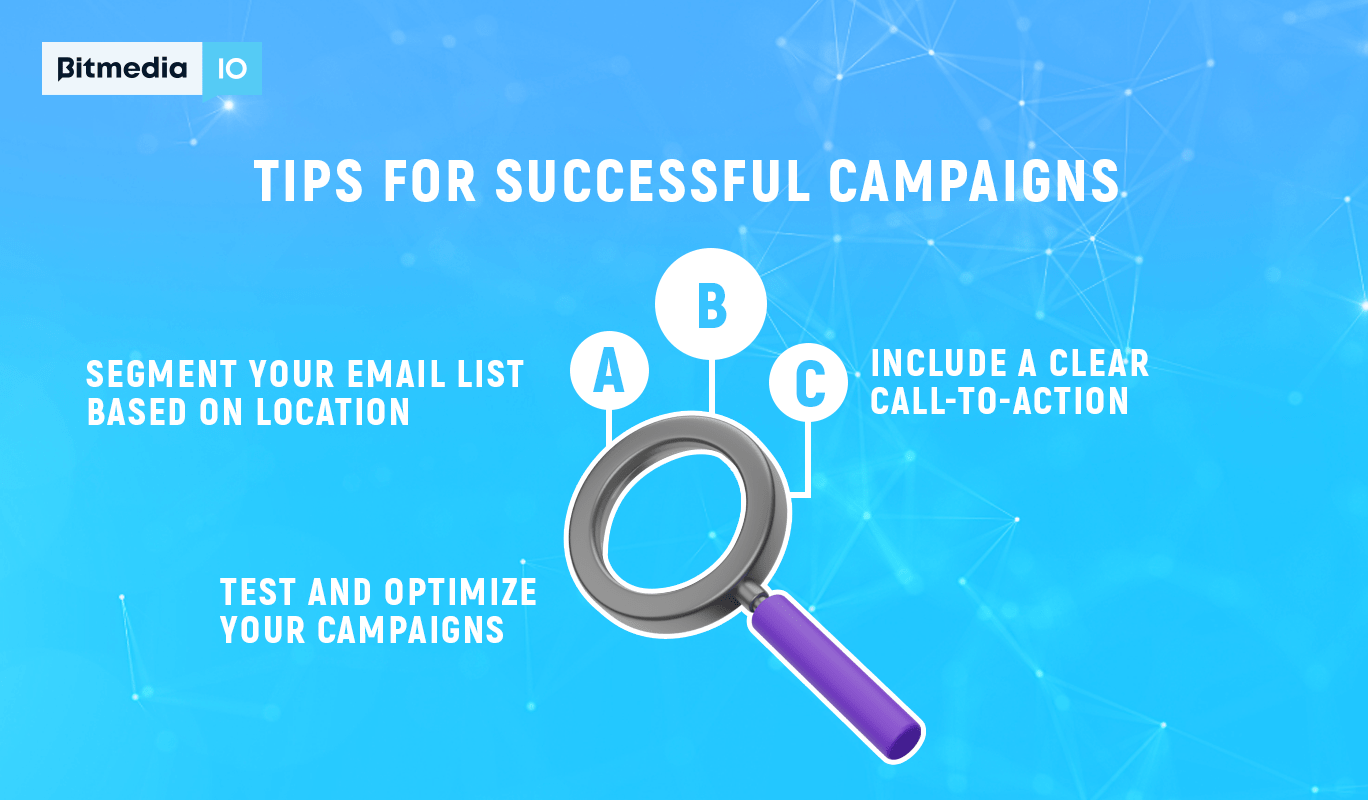How to Boost Organic Traffic: Effective Strategies for Publishers

For publishers, increasing organic traffic is a top priority. You’ve poured effort into creating your content, and naturally, you want more of your audience to enjoy it. More traffic translates to greater engagement, higher conversions, and brand growth—all without spending on ads.
Here’s an added advantage: organic traffic can enhance your ad revenue. As your site attracts more organic visitors, it becomes more attractive to advertisers. Why? Because organic visitors are typically more engaged and relevant, enhancing the value of your ad placements. This synergy between organic traffic and ad monetization creates a win-win: more impressions, clicks, and earnings for you.
If you’re eager to increase organic traffic, you’re in the right place. In this post, we’ll guide you through ten effective strategies to organically draw more visitors to your website and boost your ad revenue.
Bitmedia is a leading ad network for publishers in the crypto space, offering a powerful platform to boost revenue through targeted advertising.
How to Increase Organic Traffic
1. Write High-Quality, Relevant Content. Content is the foundation of SEO. Without high-quality content, boosting organic traffic is challenging. But what defines high-quality content?
Great content is valuable to your audience and aligns with their search intent. Focus on creating content that addresses common questions or solves problems your target audience faces. The more helpful you are, the more likely your audience will share your content, revisit your site, and boost your organic traffic.
To maximize value, thoroughly research topics—don’t just skim the surface. The more in-depth and comprehensive your content, the better it will rank. Google rewards content that demonstrates expertise and provides detailed, well-researched insights.
Keyword research remains important but avoid keyword stuffing. Instead, use relevant keywords naturally to provide context for your readers. This helps search engines understand your content while keeping it user-friendly.
2. Identify and Fill Content Gaps. Even if you’re consistently posting content, there are opportunities to increase organic traffic by addressing content gaps. These are topics you’re not covering or areas where competitors outperform you.
Start by conducting a content audit. Review your existing articles and identify topics you haven’t fully explored or could expand. Analyze your competitors to discover topics you haven’t covered yet. This is your chance to create fresh, helpful content that your audience seeks.
Use keyword research tools like Google Keyword Planner, SEMrush, or Ahrefs to find keywords you’re not ranking for but your competitors are. Target these keywords and create content around them to fill gaps and attract more organic traffic.
3. Optimize Content for Search Engines. SEO increases organic traffic. If your content isn’t optimized for search engines, it’s hard for people to find it, so make optimization a priority.
Ensure every page on your website is optimized with on-page SEO techniques. This includes relevant meta titles and descriptions, using header tags to organize content, and optimizing images with alt text. Include internal links to encourage users to navigate your site.
Use long-tail keywords to maximize visibility for relevant terms. Long-tail keywords are longer, more specific search queries with lower competition and higher conversion rates. For example, instead of targeting “digital marketing,” try “how to do digital marketing for small businesses.”
Page speed is another vital factor. Users are unlikely to stay if your website loads slowly. Google also considers page speed to be a ranking factor. Use tools like Google PageSpeed Insights to check your page load times and optimize accordingly.
More than half of web traffic comes from mobile devices. You’re missing out on a significant audience if your site isn’t mobile-optimized. Google uses mobile-first indexing, prioritizing mobile-friendly websites in search rankings. Review your site on mobile and optimize the experience for mobile users to maximize performance.
4. Link Building. Building high-quality backlinks is crucial for boosting organic traffic. When authoritative sites link to your content, Google views your site as trustworthy and relevant. Here’s how to build backlinks:
- Guest Blogging: Reach out to blogs in your niche and offer to write guest posts. This showcases your expertise and earns valuable backlinks.
- Create Shareable Content: People are more likely to link to content that is highly useful or interesting. Infographics, data-driven reports, and in-depth guides tend to get more shares and backlinks.
- Outreach: Identify websites linking to similar content and ask if they’d consider linking to yours. Ensure your content aligns with search intent and offers additional value.
5. Social Media Drive Traffic. Social media can indirectly boost organic traffic by increasing visibility. Sharing your content on platforms like Facebook, LinkedIn, and Instagram can lead to more site visits.
- Regular Sharing: Post your blog posts, articles, or new products regularly on social media to increase visibility and shares.
- Engage with Followers: Social media is not just for broadcasting. Engage with your audience, reply to comments, and participate in relevant groups to build relationships that can lead to more shares and backlinks.
- Influencer Marketing: Partner with influencers in your niche to share your content, leveraging their large followings to drive organic traffic.
6. Focus on User Experience (UX). Google prioritizes user experience as a ranking factor. Improving UX can enhance your site’s performance and rankings.
- Improve Navigation: Ensure your website is easy to navigate with a clear, intuitive layout to reduce bounce rates.
- Create a Clean Design: Avoid cluttered or outdated designs. Use simple, modern aesthetics with easy-to-read fonts and clear calls to action.
- Reduce Bounce Rates: Engage users with quality content, fast page loads, and user-friendly design to keep them on your site.
7. Update and Repurpose Old Content. Refreshing and repurposing old content can maintain its relevance and extend its reach.
- Update Content: Refresh older posts with current data and examples to keep them relevant.
- Repurpose Content: Transform high-performing content into different formats like videos, infographics, or podcasts to expand its reach across channels.
8. Optimize for Featured Snippets. Featured Snippets appear at the top of search results and can boost your visibility and click-through rates.
- Target Question-Based Queries: Focus on common questions in your niche and provide clear answers early in your content.
- Structure with Lists or Tables: Use numbered steps or tables, as Google often pulls from these formats for snippets.
- Be Clear and Concise: Provide brief answers (40-50 words) using key search terms.
- Use Header Tags: Organize content with H1, H2, etc., to help Google identify relevant sections for snippets.
- Optimize for Long-Tail Keywords: Target specific, detailed long-tail keywords to increase your chances of appearing in snippets.
9. Create “People Also Ask” and FAQ Sections. Beyond optimizing for featured snippets, targeting the “People Also Ask” (PAA) box and FAQ sections can further boost organic traffic. The PAA box features related questions, offering more opportunities to rank higher in search results.
How to Do This:
- Identify Common Questions: Research and find questions related to your content, ensuring your answers are clear and concise.
- Add an FAQ Section: Include an FAQ section on your page with frequently asked questions in your niche.
- Write Concise Answers: Keep answers short and straightforward for easy indexing by search engines.
10. Monitor Performance and Analyze Data. Use analytics tools like Google Analytics, SEMrush, or Ahrefs to track traffic, rankings, and user behavior.
- Track Keyword Rankings: Monitor how your target keywords are performing. If needed, adjust your content for better optimization.
- A/B Testing: Experiment with different titles, CTAs, and landing pages to determine what resonates best with your audience.
- Identify Traffic Patterns: Analyze which topics attract more visitors and focus on expanding content in those areas.
Key Takeaways for Publishers
Boosting organic traffic is a gradual process that requires a mix of high-quality content creation, addressing content gaps, SEO optimization, link building, enhancing user experience, and continuous performance monitoring.
Remember, growing organic traffic is a long-term endeavor. Stay patient, keep experimenting, and prioritize your audience’s needs.
Bitmedia.io enables publishers to monetize their traffic effectively while reaching engaged audiences. With advanced targeting options, real-time analytics, header bidding technology and a user-friendly interface, publishers can optimize their ad strategy and maximize earnings effortlessly. Whether you’re running a blockchain blog, a crypto news site, or a digital currency forum, Bitmedia.io provides the tools and support needed to increase your revenue potential in crypto market.


